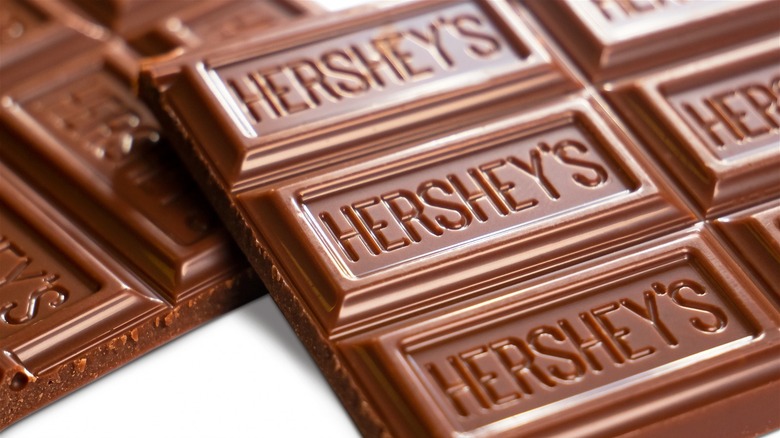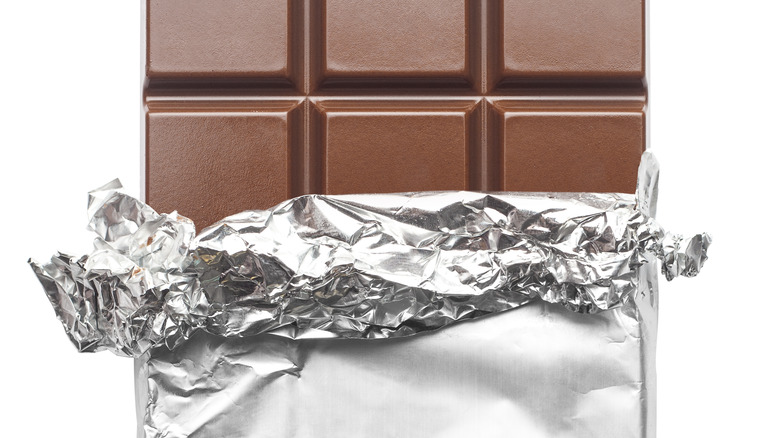The Reason Hershey's Chocolate Bar Ditched Its Foil Wrapper
For many of us, our childhood memories of peeling open a Hershey's chocolate bar are marked by the distinct but delicate chime of aluminum as we slipped the silver or gold foil-covered bar from its paper or plastic envelope. So it may have been a shock when Hershey suddenly stopped including the second layer of wrapping in the early 2000s. Now, the bars like Hershey's classic milk chocolate and Cookies 'n' Creme are just sealed in a thin coat of plastic film. So, what gives?
Hershey's says that it stopped including the foil wrap to preserve freshness, according to the Hershey Community Archives. Because while those delicately folded foil corners may look great and be satisfying to peel back, they do not provide an air-tight seal. Plastic wrappers, on the other hand, can be sealed with pressure or heat, ensuring no contaminants or oxygen can make their way in or out of the bar.
Why do some bars still use foil?
If you've bought a bar of gourmet chocolate recently, you might have noticed that it still often comes with a secondary layer of foil. In these cases, the companies are usually shipping much less than chocolate giants like Hershey, and to fewer locations, so shelf-stability and freshness are less of a priority. Not to mention that the sealed plastic wrappers we now see from Hershey's require high-powered and complex machines, as Huff Post notes, which just isn't something micro or craft chocolatiers can replicate.
And while it isn't air- or vapor-tight, the foil coat does provide some protection to the chocolate, at least preventing direct moisture or oxygen exposure. Another added benefit of foil is that you can always re-wrap your bar after opening it, which can keep it fresh for longer — a benefit to consumers. With the plastic wrappers, once the bar is open, it can't be resealed. And, well, it also just looks fancy.

